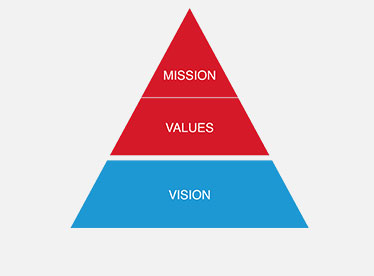-
Products
-
Transportation & Mobility Solutions
Transportation & Mobility Solutions
At Hitachi, we engineer industry-leading transportation and mobility solutions by leveraging decades of knowledge and using high-quality automotive material and components.
-
Energy Solutions
Energy Solutions
We believe the only solution for fulfilling the growing power requirements of industries and society is through a comprehensive portfolio of sustainable energy solutions and delivering innovative high-efficiency energy systems.
-
IT Infrastructure Services
IT Infrastructure Services
Hitachi’s state-of-the-art IT products and services are known to streamline business processes which result in better productivity and a higher return on investment (ROI).
-
Social Infrastructure: Industrial Products
Social Infrastructure: Industrial Products
Within the industrial sector, Hitachi is consistently delivering superior components and services, including industrial and automation solutions, useful in manufacturing facilities.
-
Healthcare & Life Sciences
Healthcare & Life Sciences
At Hitachi, we believe that healthcare innovation is crucial to a society’s advancement. A strong healthcare sector is often considered an inseparable element of a developed society.
-
Scientific Research & Laboratory Equipments
Scientific Research & Laboratory Equipments
Hitachi focuses on extensive research and development, transformative technology, and systems innovation to unfold new possibilities and create new value through scientific endeavors that strengthen the connection between science and social progress.
-
Smart Audio Visual Products
Smart Audio Visual Products
Since 1956, Hitachi audio visual products have provided state of the art solutions to consumers all over the world. It has been our pleasure to design competitive products at the lowest possible prices while maintaining our industry-leading quality standards for your comfort and enjoyment.
-
View All Products
Hitachi Products & Solutions
Hitachi, a technology leader in the U.S., offers a diverse set of products and solutions, and breakthrough technologies for smart manufacturing, green energy and mobility solutions that empower governments, businesses, and communities.
-
Transportation & Mobility Solutions
- Social Innovation Solutions
-
About Us
-
Hitachi in the U.S.A.
Hitachi in the U.S.A.
Discover information about the Hitachi group network across the Americas, upcoming events and sustainability endeavours, CSR policies, and corporate government relations.
-
About Hitachi Group
About Hitachi Group
Explore our leadership team, investor relations, environmental vision, and sustainability goals. Learn how Hitachi is leveraging its research & development capabilities for social innovation across industry verticals.
-
Hitachi in the U.S.A.
- News Releases
- Case Studies
- Careers
- R&D
Hitachi Announces Consolidated Financial Results for the First Half of Fiscal 2002
Tokyo, October 31, 2002 --- Hitachi, Ltd. (NYSE:HIT / TSE:6501) today announced its consolidated financial results for the first half of fiscal 2002, ended September 30, 2002.
During the period under review, although some regions, notably Asia, showed signs of strength, the global economy remained lackluster, set against a backdrop of a slowing U.S. economy and falling stock prices on world exchanges. The Japanese economy echoed the overall economic mood, despite signs of an upturn in production volumes following a period of inventory destocking. As deflation increased debt burdens and squeezed earnings, corporate sentiment toward capital expenditures failed to improve. And, as employment prospects remained dim, consumers too were reluctant to spend.
Against this backdrop, net sales were largely the same year on year at 3,916.4 billion yen (US$31,841 million). But Hitachi posted operating income of 61.6 billion yen (US$502 million), reversing an operating loss of 42.1 billion yen (US$342 million) in the previous year’s first half, as the Corporate Innovation Initiative (CII), including Procurement Renewal Project, produced results, and structural reforms implemented in the previous fiscal year yielded lower fixed costs.
By segment, in Information & Telecommunication Systems, sales of telecommunication-related equipment fell, while demand for storage solutions remained firm. Consequently, segment sales remained consistent year on year at 878.2 billion yen (US$7,140 million). The segment recorded operating income of 42.1 billion yen (US$343 million), up 190% over the same period in fiscal 2001. This result reflects a steady performance in storage solutions and systems integration, as well as benefits from structural reforms, particularly in the telecommunications sector, implemented in the previous fiscal year.
In Electronic Devices, sales in display operations were driven higher by rising demand for small and medium-size TFT LCDs, mainly for mobile phones, and large-size TFT LCDs. This outweighed lower sales stemming from Hitachi’s withdrawal from CRTs for PC monitors in the previous fiscal year. Semiconductor sales edged up slightly over the fiscal 2001 interim period on strong demand for system LSIs, including LCD drivers and microcomputers for automotive applications. As a result, segment sales were 766.4 billion yen (US$6,231 million), almost the same year on year. The segment recorded an operating loss of 7.9 billion yen (US$64 million), a 65.0 billion yen (US$528 million) improvement over the 72.9 billion yen (US$593 million) operating loss in the first half of fiscal 2001. This turnaround reflected the benefits of structural reforms, including the termination of unprofitable products such as CRTs for PC monitors and the streamlining of certain semiconductor production lines.
In Power & Industrial Systems, sales declined 4% overall, to 1,068.1 billion yen (US$8,684 million). This was on account of lower sales for maintenance services for nuclear and thermal power generation plants of Japanese electric power companies, as well as lower sales of air-conditioning equipment, industrial equipment, chemical plants and other products, due to the fall-off in private-sector plant and equipment investment. Operating income dropped 58%, to 11.1 billion yen (US$90 million) due to fewer major projects, notably of power generation equipment and other exports, as well as falling sales revenues from environmental equipment in Japan.
In Digital Media & Consumer Products, although sales of mobile phones decreased, sales of optical storage products and plasma TVs increased year on year. In home appliances, overall sales were sluggish due to soft domestic demand. Hitachi Maxell, Ltd. saw audiotape and videotape sales fall, but sales of computer tapes, optical media and rechargeable batteries increased. Overall, segment sales rose 3% year on year, to 597.6 billion yen (US$4,859 million). The segment recorded operating income of 5.7 billion yen (US$47 million), a turnaround from the 6.0 billion yen (US$49 million) operating loss in the same period of the previous fiscal year, even as price competition intensified in a deflationary economic environment. This was partly attributable to the benefits of structural reforms.
In High Functional Materials & Components, Hitachi Metals, Ltd. posted lower sales as a result of customers’ inventory volume corrections for electronics-related products and other factors, while Hitachi Cable, Ltd. also posted lower sales, with sales of submarine fiber-optic cables declining sharply. Hitachi Chemical Co., Ltd. posted lower sales for housing equipment and environmental facilities, although sales increased for electronics-related materials such as those for semiconductors and LCDs. As a whole, segment sales decreased 2% year on year, to 613.0 billion yen (US$4,984 million). However, the segment posted operating income of 9.0 billion yen (US$74 million), reversing a year-earlier loss of 1.4 billion yen (US$12 million), as it benefited from the results of structural reforms.
In Logistics, Services & Others, overseas sales companies achieved higher sales of hard disk drives. However, the sale of Tokyo Monorail Co., Ltd., formerly a subsidiary of Hitachi Transport System, Ltd., in the latter half of the previous fiscal year negatively affected segment sales, leading to a slight decline at 700.6 billion yen (US$5,696 million). Operating income dropped 80%, to 1.4 billion yen (US$12 million).
In Financial Services, segment sales increased 4% year on year, to 293.3 billion yen (US$2,385 million). This increase was partly attributable to the boost given by Hitachi Capital Corporation’s acquisition of Sekisui Leasing Co., Ltd. in the second half of the previous fiscal year. Operating income declined 9%, to 18.6 billion yen (US$152 million).
Other income came to 26.7 billion yen (US$217 million), an increase of 9.4 billion yen (US$77 million) compared to the first half of the previous fiscal year, mainly reflecting a net gain on securities. Meanwhile, other deductions were 42.5 billion yen (US$346 million), a 31.1 billion yen (US$253 million) year-on-year decrease, as restructuring charges were not incurred during the period as was in the first half of fiscal 2001 while interest expenses were lower resulting from reductions in debt.
As a result, income before income taxes was 45.8 billion yen (US$373 million), and after the recognition of 21.2 billion yen (US$173 million) in income taxes, Hitachi recorded income before minority interests of 24.6 billion yen (US$200 million) and net income was 12.8 billion yen (US$104 million).






